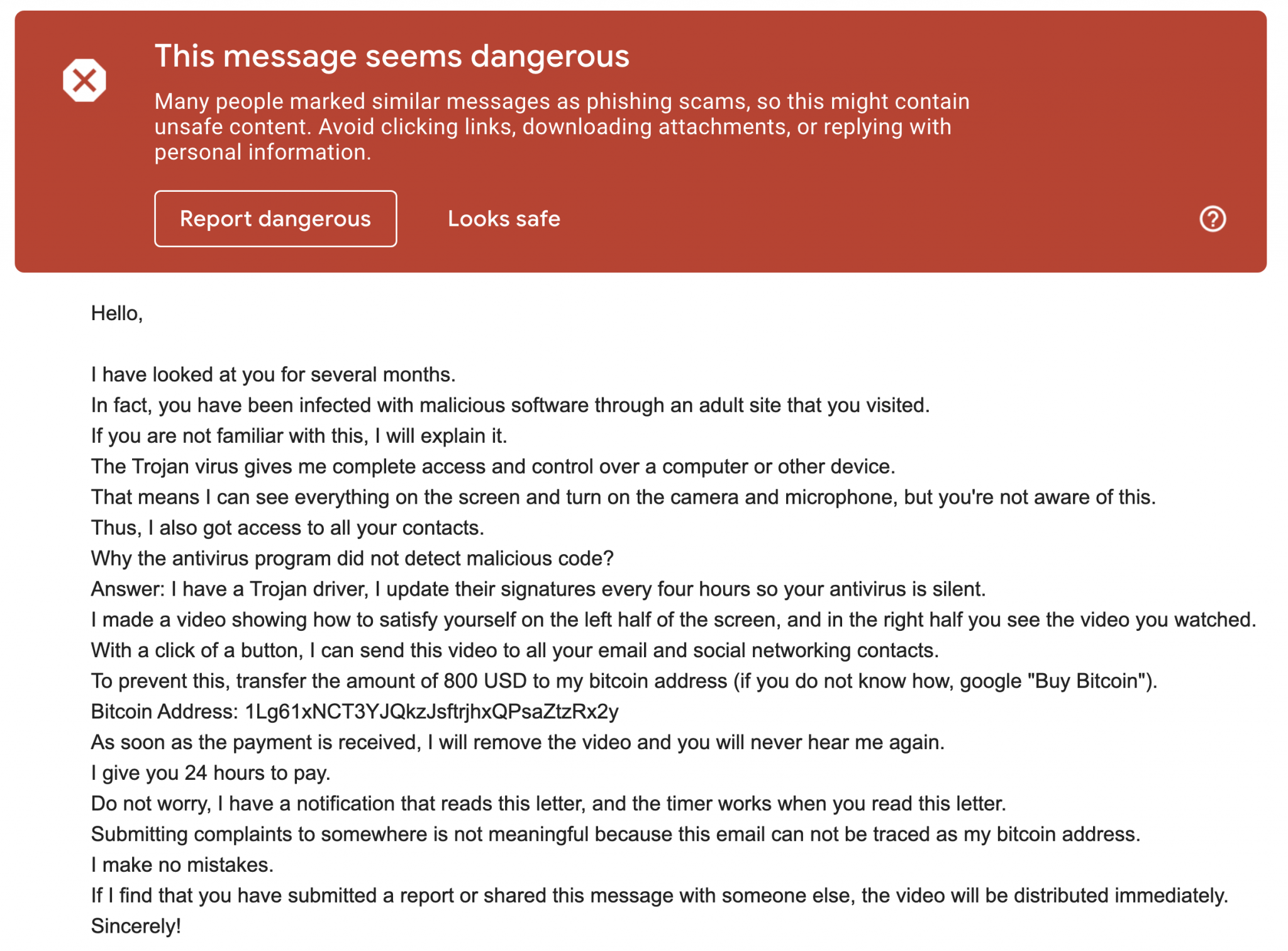Yesterday, high-profile Twitter celebrities and other influential accounts were hacked to promote a Bitcoin scam.
The scam isn’t uncommon and is just one of many that involve cryptocurrency in some way. To help investors avoid scams like these, we’re highlighting the most common crypto-related scams and how to avoid them.
Bitcoin At Center of High-Profile Twitter Scam, Major Accounts Hacked
Bitcoin was recently trending on the popular social media platform Twitter, but for all the wrong reasons.
Late last night, hackers gained access to the accounts of Kanye and Kim Kardashian West, Elon Musk, Bill Gates, and several other big names.
Even democratic part presidential frontrunner Joe Biden’s account was compromised.
Related Reading | Lobbyist, Filmmaker, Cryptocurrency Scammer: Who Is Jack Abramoff?
All accounts were used to post a message and a BTC wallet address. The character-limited tweets included offering users a sum of BTC for free.
But to get the free handout, users first had to send Bitcoin to the wallet address.
Then, the hackers claimed users would be sent back double. In this case, hackers made off with over $120,000, $40,000 of it just from one individual alone.
Common Cryptocurrency Scams: How To Spot and Avoid Them
It’s yet another sad case of scammers taking advantage of greed or lack of education. But it’s certainly not the only case.
In fact, several different types of Bitcoin-related scams currently exist, and new ones appear each day. Here are some of the most common crypto scams and how to avoid them.
Twitter Crypto Giveaways
Cryptocurrency giveaways, just like what took place recently at such a large scale and with high profile accounts, are actually quite common.
These types of scams, however, don’t use actual celebrity accounts, but imposter accounts that bear a close resemblance.
Users are invited to send BTC or other crypto to a wallet address, and once they have done so will magically receive double the amount they spent.
This type of scam regularly leads to stolen funds, but could not be more obvious. If it seems to good to be true, it very well likely is.

Email and Website Phishing Scams
It is especially important to double and triple-check any URL has been typed correctly when visiting a cryptocurrency exchange, and following any links via email or online can be risky.
Fake emails and websites have been cleverly designed to dupe investors into entering sensitive information such as passwords.
Once hackers gain access to this info, they use it to hijack funds.
SIM-Card Swaps
SIM-card swaps have resulted in wealthy crypto investors losing millions and millions in funds. Hackers duplicate the SIM-card of a user’s cell phone, which allows them to spoof the phone number onto a new phone.
Related Reading | Crypto SIM Hack: Somber Reminder To Never Invest More Than You Can Afford to Lose
Hackers then intercept sensitive two-factor authentication codes sent via text message, and utilize them to gain unauthorized access to accounts. They then drain the accounts of the funds entirely.
Relying on Google Authenticator over text message-based two-factor is the easy fix here. But some investors learn the hard way.
Bitcoin Blackmail Emails
Another type of email-based scam popping up in recent years is an extortion scam where hackers claim to have taken over a user’s webcam.
The hackers then threaten that if a sum of BTC isn’t quickly handed over, they will expose unsavory photos and videos taken through the camera. This type of correspondence is scary to receive, but don’t fret – the hackers aren’t likely telling the truth.
If they were able to gain access to a webcam, they could have also locked down the computer system completely and forced a ransom much more easily.

Cryptojacking
Cryptojacking involves malware being installed on unsuspecting user’s computers. While this doesn’t outright steal any crypto from users, it does steal computer resources and uses them to mine for cryptocurrencies like Monero or BTC.
Running malware protection and antivirus software like Malwarebytes can offer a frontline layer of protection against this sort of scam.
Clipboard Replacing Malware
It’s always wise to double- and tripe-check and crypto addresses before hitting send, just in case there is a typo. But it is even more important to do so if you have copy-pasted the address.
Some types of malware infiltrate clipboards on computers, so when you copy an address, a different address is pasted.
This diverts funds to hackers who coded the malware, leaving users out of funds and out of luck.
Paid Group Leaders
Another type of scam plaguing the cryptocurrency space isn’t always as obvious as the others.
These scammers often mean well, but get in over their heads and lose control. Others start off with poor intent and a premeditated plan to steal funds from users.
Online crypto traders boasting about their winning trades and sharing successful charts after moves played out are sure signs of a “Paid Group Leader.” Earning a fee for giving advice to others, seals the deal.
These types of traders aren’t always scammers, but finding those that aren’t is equivalent to a needle in a haystack. These traders take the money of newbies, offering them trading advice in exchange.
In time, either the truth comes out that the trader isn’t what they were cracked up to be, or they simply don’t ever supply paying subscribers with a value that equals the cost of tuition.
Whatever the scam, it is best to take a step back and pay close attention when dealing with anything Bitcoin-related.
 newsbtc.com
newsbtc.com